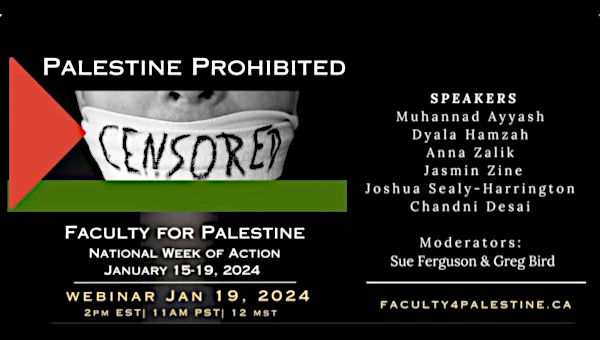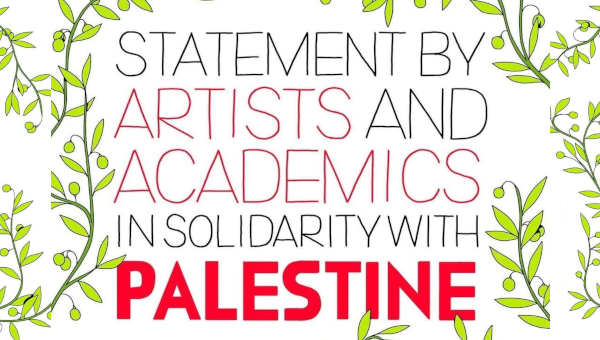Competitive Creativity? Arts and Culture in Toronto’s Mayoral Debates
On September 29th at the Toronto mayoral debate on arts and culture at the Art Gallery of Ontario (AGO), variations of business-friendly urban policies were presented to Toronto’s arts community. Surrounded by Frank Gehry’s architectural design in one of Toronto’s ‘world class’ culture institutions, a diverse crowd – artists and culture workers, directors of major arts institutions and festivals, representatives of artist run centres, and private funders – came to hear the leading candidate’s thoughts about the role of culture in Toronto.
Neoliberal urban policies celebrating the mythic ideal of an artistic and inclusive, yet competitive and business-friendly ‘creative city’ keep re-appearing in Toronto urban politics like, what Toronto writer RM Vaughan describes as, some ‘invasive species.’ This intellectual and policy framework conflates culture with economic competitiveness and promotes, what appear to be ‘socially liberal’ policy prescriptions including urban policies to promote ‘revitalization’ and attract tourists with arts festivals like Scotia Bank Nuit Blanche and L’Oreal Luminato. The creative city script is a ‘third way’ policy model for urban politicians, followed closely by the outgoing Toronto Mayor David Miller and left-leaning City Council: it glosses over competitive, market-friendly policies with a sophisticated, urbane and progressive veneer – neoliberalism with a hip and urban face.
In the 2010 Toronto municipal election, three of the four front-running mayoral candidates echo these creative city ideals in their culture policy platforms. And some members of One Toronto (www.onetoronto.ca)[1], the ‘popular front’-type citizen group mobilizing ‘progressive’ voters, are also supporting these types of policies. They have been rallying residents to protect the city’s arts initiatives, especially corporate arts festivals and events that the vitriolic, right-wing populist candidate, City Councillor Rob Ford, threatens to exterminate. Ford’s pugilistic and often authoritarian tone has helped establish a political dynamic whereby corporate-friendly approaches that connect culture and boosterist development goals appear as refreshing, ‘progressive’ alternatives. Thus One Toronto has captured a huge swath of notables – from former Tory Mayors, leading social activists, and critical urban theorists, to the Toronto and York Region Labour Council, key unions, and a range of the arts community canvassing for the ‘arts vote.’ Consequently, tracing, and interrogating these trends requires creativity and patience. Who benefits from corporatized, competitive arts and culture policies? Are we really backed into a corner where this understanding of culture is our only option? And are we always reduced to backing the most ‘progressive’ sections of the urban capitalist class in building an urban political alternative?
Creative Cities and Accumulation by Culture
In these debates, Ford’s anti-culture approach created a vacuum which was promptly filled by Rocco Rossi, George Smitherman and Joe Pantalone’s culture planning platforms – all reiterating urban policy guru Richard Florida’s ‘creative city’ script. Each platform – Rossi’s The Creative City Plan, Smitherman’s Creative City Plan, and Pantalone’s Cultural Capital Plan – all outline market-friendly policy and planning prescriptions. Each platform supports public and private investment in world-class mega arts and sports festivals like Luminato and the Pan Am games, ‘revitalized’ neighbourhoods, community-based arts, and investment in Toronto’s creative industries.
While at the AGO mayoralty debate Rob Ford spoke fondly about the arts, especially his experience playing a starring role in his high school play The Princess and the Pea, he also warned the crowd that the arts and culture funding, alongside other ‘costly’ services swallowing up tax dollars, needs to be slashed. He insisted that culture workers and artists should stop relying on public funding and, instead, they should consider more creative, entrepreneurial ways to seek private sector funding including hosting more “fund raising dinners.” The crowd erupted in laughter at this sage advice: this was an audience especially familiar with hustling business people for funding.
After Ford finished reminiscing about his high school play, Rossi, Smitherman and Pantalone all introduced their own market-friendly culture planning platforms.
Referring to his Cultural Capital Plan, a policy platform outlining the same, key goals outlined in the Miller administration’s Culture Plan, Pantalone listed the combined social and economic benefits of the arts. His platform promises to fund arts and culture in order to give Toronto a ‘competitive’ edge and keep its place among ‘top tier’ global cities. Referring to Toronto as the ‘Silicon Valley of Culture,’ Pantalone placed the City as a ‘world class’ arts destination, “we’re always told that Toronto is one of the best places in the world for art; right behind London, Paris and New York.” Things could only get better for a city already at the top of its game, he insisted, by supporting more business partnerships with the film industry. Arts and culture can be more integrated at the community-scale in arts-oriented ‘community hubs’; supported with business partnerships, these neighbourhood spaces can promote culture alongside education programs, seniors programs and neighbourhood-scale ‘revitalization’ initiatives.
Smitherman referred to the key points in his own Floridian plan – the Creative City Plan – a framework featuring pretty much the same check list of efforts to build public-private partnerships, community-based culture, and cultural and sports mega-events that will encourage real estate investment. Supported by many high profile arts proponents in Toronto, including Luminato arts festival CEO Janice Price, Smitherman promised to support arts and culture by investing in neighbourhood based programming as well as in large-scale corporate sponsored festivals and events like the Pan Am games. Promising to increase cultural investment to $25 per Torontonian to pay for arts and cultural organizations, he also plans to use development charges to create the type of affordable live/work spaces and cultural spaces developed by Toronto development corporation Artscape.
Rossi also spoke of the importance of supporting creative people and artistic practice in Toronto while explaining his very own, unique arts and culture platform: The Creative City plan. Rossi explained how artists are creative leaders, “champions of innovation” that drive the economy as well as “steward our collective growth.” Alongside Smitherman and Pantalone, Rossi promises to improve arts funding and transform Toronto into a bustling Hollywood North.
The Spectacles of Neoliberal Cultural Planning
Frustratingly, these neoliberal approaches to culture planning did not trigger the guffaws the way Ford’s ignorant advice about fundraising dinners did. Since that night, a few friends who work in Toronto’s culture industries have pointed out to me that these more ‘creative city’ options are better than nothing. Compared with Ford’s slash and burn mentality, Pantalone, Smitherman and Rossi’s platforms seem appealing, almost making it seem trivial to interrogate policies that support culture, especially when some of these partnerships encourage neighbourhood-based programming. But, is this the best we can do? Are these competitive, market-lead understandings of culture our only alternative?
Approaching these policies with caution is important when Toronto’s creative city arts policy programming continues to groom simultaneously the city for competition and gentrification that result in displacement on one hand and encourage neighbourhood engagement and community development with interactive artistic moments on the other. These contradictions make some artists particularly ambivalent toward festivals like Nuit Blanche, a City of Toronto and ScotiaBank supported initiative and L’Oreal Luminato, a Festival founded by the Toronto City Summit Alliance (TCSA).[2] Nuit Blanche, especially, provides exposure for both emerging and established artists and puts the arts on everyday peoples’ radars. However, these festivals have also been described by one Toronto performance artist as ‘arts carpet bombing events’ that give the impression that the City supports the arts when, in fact they are primarily marketing a spectacularized, arts-friendly version of Toronto that supports artists for a few days, but provides banks and corporate partners a lot of advertising. Further, heavily reliant on volunteers and the underpaid and unpaid work of artists, the ‘collaborative partnerships’ celebrated in creative city policies, these festivals download the responsibility for promoting corporations and banks on to individuals and neighbourhood organizations.
While festivals like these open up room for debate and critique about the role of culture in urban policies, they seem to be in fashion in this municipal election. Somehow mega-arts festivals have appeared as a ‘public’ good to be defended by engaged citizens. For example, at this year’s Nuit Blanche Festival One Toronto volunteers hit the busy streets to hand out information sheets on the importance of the arts and the negative impacts of culture funding cuts. The high profile arts event was an excellent way to access the throngs of people out on the streets, encouraging them to consider the arts in this election. Not surprisingly, Luminato’s CEO Janice Price has emerged as pivotal public defender of the arts for the city. Somehow in this election, boosterist competitive culture planning events have emerged as important sites for grassroots mobilization and ‘resistance’ to right-wing populism.
Progressive Cultural Policy?
The emergence of these Festivals as symbols of ‘progressive’ or ‘inclusive’ culture policy in response to Ford’s vision, in particular, illustrates how creative city policies have gained momentum at the municipal, provincial and federal levels as well as in internationally connected private sector circles. Luminato was invented precisely as a result of Mike Harris’s abrasive, slash and burn tactics that Ford is threatening the city with. Founded by the Toronto City Summit Alliance, this Festival was specifically designed to put Toronto on the global, competitive map after the tumultuous mid-1990s when Mike Harris stripped the city of resources and power. TCSA leader, self-appointed urban expert and senior partner at Boston Consulting, David Pecaut, along with Tony Gagliano, Executive Chairman and CEO of St. Joseph’s Communications – Canada’s largest communications company – dreamed the Festival would transform Toronto in the internationally celebrated city of arts and culture. In order to give Toronto a makeover, according to one Toronto Star article, this ten day multidisciplinary arts festival would stage the city with interactive creativity. Gagliano announced: “One of the things I love thinking about, whether it’s soon or decades from now, is that the most creative people in the world will choose Toronto to come and live.”
Immediately Gagliano and Pecaut brought the heads of Toronto’s high profile arts institutions, including the Frank Gehry re-designed Art Gallery of Ontario and the Daniel Lebeinskind re-designed Royal Ontario Museum, on board to make this vision a reality and to usher in a cultural renaissance on downtown Toronto. Already the federal and provincial government and corporations had invested hundreds of millions of dollars to support these institutions’ cultural renaissance. Luminato, then, linked these renaissance initiatives together and the festival stages the entire downtown core with interactive performance, music and community arts for ten days in June. Gagliano and Pecaut also sought international cachet by importing Chief Executive Officer, Janice Price, and artistic director, Chris Lorway, from a high profile Philadelphia arts organizations. Both had cut their teeth leading the Lincoln Centre and collaborating on various culture led revitalization projects including the Bring New Orleans Back Commission – a commission exploring ways to catalyze ‘culture led revitalization’ to post Hurricane Katrina. Finally, Richard Florida himself was included in the core network. Indeed, Florida was profiled in an edition of the Atlantic Monthly dedicated to celebrating Toronto the ‘creative city’ – a rather crass symbol to the cultural entrepreneurs that Toronto was really making it, with a profile in a widely read American magazine.
Signalling the privatization of culture policy at the provincial and federal levels in Canada, the Luminato team, made up of these powerful, internationally connected private sector players and high profile institutions, was able to access millions of dollars of support in just a few years. Particularly interested in promoting arts and culture for tourism, the Canadian and Ontario governments granted the Festival $22-million in support ($20-million from the province and $1-million from the federal government) without any peer review process. To put this into context, the Ontario Arts Council distributes $60-million a year to roughly 400 Arts organizations – this means a mere $150,000 an organization after a rigorous peer review.
Precarious Cultural Workers
This policy focus favouring cultural accumulation and competitive culture planning to accessorize the City of Toronto has occurred in tandem with cuts to funding that support artistic workers, and the many ‘behind the scenes’ support workers within the culture industry. In the same time period, grants for cultural support workers – technicians, curators, writers, office help – has been slashed by provincial and federal arts funding bodies. Also, in 2009, Art Gallery of Ontario, a high profile partner in the Luminato Festival, laid off Ontario Public Service Employees as part of the institutions ‘restructuring’ plans. Contracting-out, demands for concessions and all kinds of precarious work has been growing rampantly in the Toronto arts sector.
While a few artists have benefited from this Festival’s focus on staging ‘world class’ culture, many artists and artistic labourers are left out in these trends.
For example, when Luminato emerged in 2007, artists and activists critiqued the festival’s emphasis on celebrating Toronto theatre when four local theatre spaces had to close due to lack of operating funding and gentrification pressures. For emerging playwrights and actors, the current theatre scene in Toronto is far from healthy. For one theatre director Luminato’s celebration of the Toronto’s arts scene is like ‘putting make-up on a corpse.’ Often spaces that nurture more experimental, oppositional, work of underrepresented artists of colour and queer artists, the loss of these spaces impoverishes grassroots arts and culture in favour of marketable mega-events.
To conclude, while Ford may have given a spectacular performance in the Princess and the Pea, his consistently racist, sexist and homophobic routine in Toronto City Council was terrifying. Without a doubt, his right-wing populism act – so clearly mimicking the Tea Party movement in the U.S. – must be stopped from taking centre stage as Mayor. However, the ‘creative city’ policies of the other candidates are barely an alternative. They promote neoliberal artistic competition and economic development at the expense of under-funded, often unpaid workers and artists as well as residents displaced by the steady advance of gentrification promoted by the ‘creative cities’ policy agenda. The developments in Toronto over the last decade and longer, and certainly under the two terms of the Miller regime, signal why we need to consider seriously the implications of market-led culture policy prescriptions.
Before we race out to pound the pavement to save festivals promising ‘world class’ artists, red carpet openings, and overall ‘revitalization’ with culture, we need to stop and think about the causalities of corporate friendly arts policies that are being framed as the ‘progressive’ and only option. The ‘restructured’ AGO workers and under funded grassroots arts spaces are solemn reminders that ‘creative cities’ policies have been a vehicle for accumulation by cultural entrepreneurs and for advertising by major corporations, but no answer for a democratic and inclusive arts policy. Like the Toronto municipal election as a whole, they illustrate the long term effects this invasive neoliberal policy species has on Toronto’s arts and culture scene. •
Endnotes
1.
Intentional or not, ‘One Toronto’ was also the name used by George Smitherman for his citizen’s front against the city workers strike of 2009. He was then transitioning from his prominent Liberal provincial cabinet post to mayoralty candidate. Smitherman is now the lead front candidate to block the right-wing populism of Ford.
2.
The corporate naming of all arts festivals and public spaces is characteristic of the neoliberal core to the creative cities agenda, and a central feature of the policy approach of the Miller regime and the TCSA. This corporate vulgarity has reached its zenith in the restructured Royal Ontario Museum and the Art Gallery of Ontario, where the exhibition spaces have all become named after one capitalist or another.
Resources
- Greg Albo, Challenges for Urban Social Justice Movements: Neoliberal Urbanism, the Canadian City and Toronto
- Yen Chu, Time to Assess Toronto’s Mayor Miller
- John Grundy, Getting Creative in Toronto…
- Stefan Kipfer, The Hordes at the Gate?





